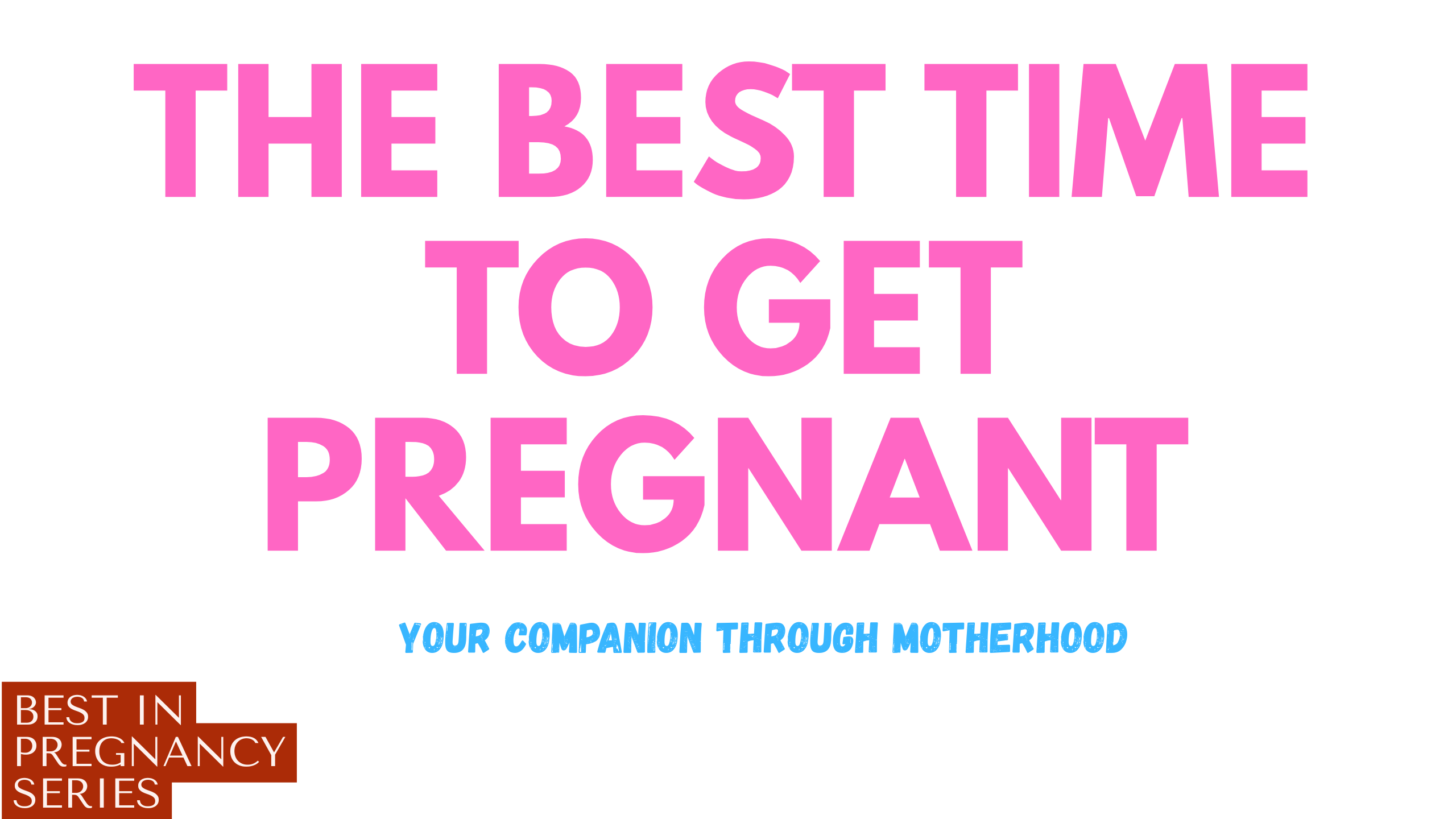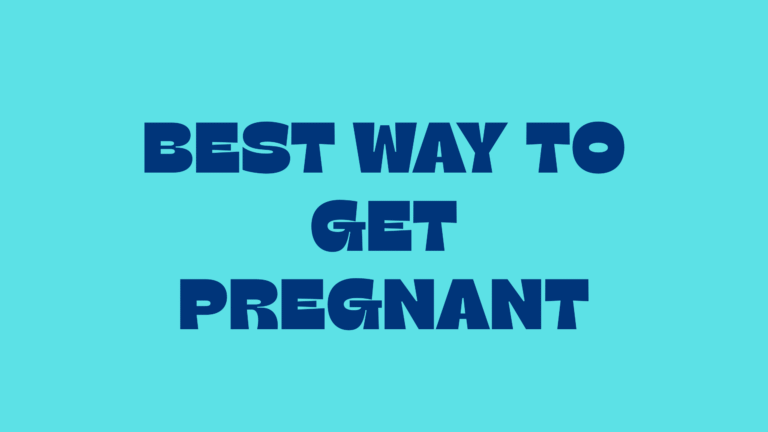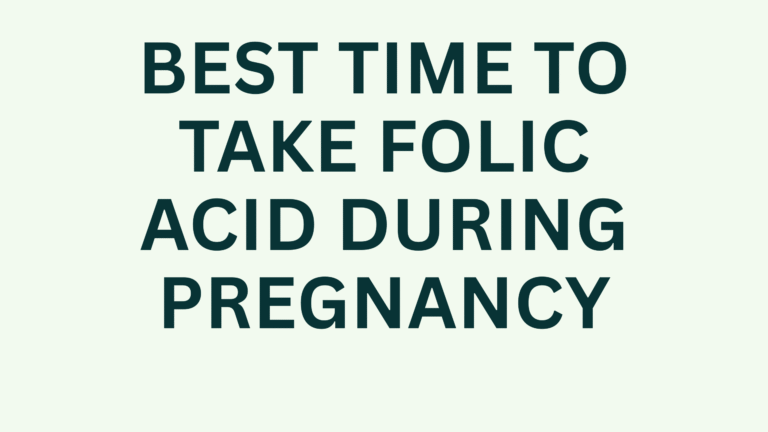The Best Time to Get Pregnant: A USA Couple’s Journey Through Fertility, Timing, and Hope

The Best Time to Get Pregnant
Bringing new life into the world is one of the most meaningful dreams many couples share. But when it comes to timing pregnancy, many people wonder: When is the best time to get pregnant? This question is not just about biology—it’s also about lifestyle, planning, emotions, and the unique circumstances of every couple.
To explain this in the most relatable way, let’s step into the lives of Emily and Jason, a young couple from Austin, Texas. Their story of love, struggle, science, and hope will not only make this blog engaging but will also weave in every essential detail you need to understand about conception timing.
Emily and Jason’s Story Begins
Emily, a 29-year-old elementary school teacher, and Jason, a 31-year-old software engineer, had been married for three years. Like many couples in the United States, they had spent the early years of their marriage traveling, building careers, and enjoying life together. But one warm spring evening, while walking along Lady Bird Lake in Austin, Emily turned to Jason and said with a smile,
“I think I’m ready. I think it’s time for us to start a family.”
Jason squeezed her hand and nodded. “Me too. But… how do we even figure out the best time to get pregnant?”
This simple question launched them into a journey many couples take: understanding fertility, timing, and how to increase the chances of conceiving naturally.
Understanding the Fertile Window
One of the first things Emily and Jason learned is that a woman is not fertile every single day of her cycle. Instead, there is something called the fertile window.
- The fertile window lasts about 6 days each cycle.
- It includes the 5 days before ovulation and the day of ovulation itself.
- This is the best time to get pregnant, since sperm can survive in the female reproductive tract for up to 5 days, waiting for the egg.
For Emily, who had a fairly regular 28-day menstrual cycle, ovulation typically happened around day 14. That meant her best chance of pregnancy was between days 9 and 14.
But like most women, Emily’s cycle sometimes varied, which meant she had to learn about different ways to track ovulation.
How They Tracked the Best Time to Get Pregnant
1. Calendar Tracking
Emily started by marking her cycle on a calendar app. This gave her a rough estimate, but since cycles aren’t always predictable, she knew she needed more accuracy.
2. Basal Body Temperature (BBT)
She bought a digital thermometer and tracked her morning temperature daily. After ovulation, a woman’s BBT rises slightly due to progesterone. This helped Emily confirm when ovulation had already occurred, though it didn’t predict it ahead of time.
3. Ovulation Predictor Kits (OPKs)
Jason suggested they try ovulation test strips, which measure luteinizing hormone (LH) in urine. A surge in LH means ovulation will likely happen in the next 24–36 hours. These kits turned out to be one of the most reliable tools in finding their best time to get pregnant.
4. Cervical Mucus Method
Emily also learned to check cervical mucus changes. Around ovulation, it becomes clear, slippery, and stretchy—similar to egg whites. This is a natural sign of peak fertility.
The Emotional Roller Coaster
Trying to conceive (TTC, as many women in the U.S. call it in online forums) isn’t always straightforward. Emily and Jason were optimistic in the beginning, but after three cycles without success, Emily started feeling anxious.
She confided in her best friend Sarah, who shared:
“It took us almost a year before we conceived. Don’t stress too much—timing is key, but stress can also get in the way.”
This was true. Studies show that stress can delay ovulation or affect hormone balance, making it harder to conceive.
Jason, too, felt the pressure. He admitted one night, “It’s strange. Something so natural feels like a science experiment now.”
They both realized they needed to balance science with intimacy, keeping love and connection at the center.
What Doctors in the USA Recommend
Emily scheduled an appointment with her OB-GYN in Austin. Dr. Rodriguez explained everything clearly:
- Best time to get pregnant: Have intercourse every 1–2 days during the fertile window.
- Lifestyle choices matter: Diet, exercise, and avoiding alcohol and smoking can improve fertility.
- Supplements: Folic acid (400–800 mcg daily) should be started before pregnancy to prevent neural tube defects.
- When to seek help: If under 35, try for a year before consulting a fertility specialist. If over 35, seek help after 6 months.
Dr. Rodriguez reassured them, saying:
“Most healthy couples will conceive within 6–12 months if they time it right.”
Science Behind the Best Time to Get Pregnant
To break it down simply:
- Day 1 = First day of period.
- Day 14 (average) = Ovulation.
- Days 9–14 = Fertile window (best time).
- Day 15+ = Chances drop quickly until next cycle.
But not all women ovulate on day 14. That’s why tools like ovulation kits or apps are so helpful.
The Lifestyle Factor
Jason and Emily also realized that it wasn’t just about timing—lifestyle mattered too.
- Healthy Diet: Emily added more leafy greens, whole grains, and lean proteins. Jason cut down on soda and processed foods.
- Exercise: Moderate activity like yoga and walking helped Emily. Over-exercising, though, can harm fertility.
- Sleep: They both aimed for 7–8 hours of sleep a night.
- Limiting Alcohol & Caffeine: Both made small adjustments to improve their chances.
The Big Moment
After 6 months of trying, Emily woke up one Saturday feeling different. Her period was late. She reached for a pregnancy test—the same brand she’d seen in countless commercials—and within minutes, two pink lines appeared.
Tears filled her eyes as she whispered, “Jason… it worked.”
Jason hugged her tightly, overwhelmed with joy. Their careful timing, patience, and emotional resilience had paid off.
Lessons from Emily and Jason’s Journey
- The best time to get pregnant is during the fertile window, especially the 2 days before ovulation.
- Tools like ovulation kits and apps can help couples track fertility.
- Stress, lifestyle, and emotional connection play a huge role in conception.
- Patience is essential—sometimes it takes months or even a year.
Advice for Couples in the USA
For American couples, work schedules, healthcare access, and lifestyle factors can all impact fertility. Many rely on fertility apps like Flo, Clue, or Glow, or seek guidance from fertility clinics if needed.
Insurance coverage also varies in the U.S., so some couples consider fertility treatments like IUI or IVF when natural methods don’t work.
But for most, understanding the fertile window and consistently trying during that time is enough to achieve pregnancy.
Final Thoughts
Emily and Jason’s story mirrors that of millions of couples in the United States. The science of conception is universal, but the journey is deeply personal.
The best time to get pregnant is not just about ovulation—it’s about finding the right balance between biology, love, and timing. With the right knowledge and patience, most couples can fulfill their dream of becoming parents.
About The Author
JYO JOURNEY
PregnancyKit – to provide real, honest, and easy-to-understand information for women who might be wondering, “Am I pregnant?” or “What should I expect now?” Every guide I write is based on what we wished we had known during our own journey.
Through PregnancyKit, I want to help women feel supported, informed, and confident from the very first symptom. Because I believe every woman deserves clarity, care, and a little less stress during one of the most important journeys of her life.



3 thoughts on “The Best Time to Get Pregnant: A USA Couple’s Journey Through Fertility, Timing, and Hope”